The post So You Have No Model? Here are Ways to Practice Your Portrait Lighting With Toys appeared first on Digital Photography School. It was authored by Mat Coker.
Portrait lighting can be tricky to learn.
After reading articles and watching tutorials about light, you’ll excitedly look for a person to practice on. Although, once you finally have a person in front of your camera your mind goes blank and nothing is as easy as those tutorials made it seem. You forget all that information you’ve been overloaded with and feel foolish in front of your ‘model.’ Worst case scenario, you’ll become discouraged and give up.

Superman was always my favorite.
But there is a way to practice basic portrait lighting techniques and build your confidence before photographing people. You can practice portrait lighting with toys until you feel comfortable enough to experiment with people.
You’ll learn how to position your subject and light source without the stress of working with a real person.
Once you understand the basic principles of portrait lighting your confidence will grow and you can keep learning new techniques and refining your skills.
Also, who doesn’t want an excuse to play with toys again?
Choosing the right toy
Choose a toy with a human figure so that what you learn can transfer easily when you photograph real people. Try to find one with pronounced facial features so that there will be realistic shadows created.
Your toy should have some texture too. This is important because it helps you to see how the light affects your subject. As light skims across a textured surface, it will create highlights and shadows, which will help your portrait to pop. Everybody who sits in front of your camera will be textured (hair, skin, and clothes).

This Superman toy has lots of texture and muscular looking features. His face has pronounced features that mimic a real person’s face.
Using a flashlight (hard light source)
Quality of light refers to the hardness or softness of the light.
A general rule is that the smaller the light source, the harder the light will be. This means that there will be deep, crisp shadows. The larger the light source, the softer the light will be. The difference between the shadows and highlights will be much less intense.
I’ll begin by using a flashlight as a hard light source. The basic lighting patterns will be easier to see with hard light.
In each of these sample photos, we’ll focus on the direction of light and what happens as we move the light around.
- Front
- Rembrandt
- Side/split
- Edge
- Back/silhouette
- Uplighting
I kept my Superman figure in one place and simply moved the light around it.
The first image is the lighting set up and the second image is the portrait.
Front light

The light is placed directly in front of your subject. It’s a little higher than his eye level.

You can see that he is evenly lit with a crisp shadow under his neck created by his jawline.
Rembrandt light

This is a classic lighting pattern named after the painter, Rembrandt. Reposition the light so that it hits your subject on a 45-degree angle. It’s still a little above eye level.

The left side of his face becomes shadowy, but there is a triangle of light under his eye.
Side light/Split light

The light has now been positioned directly beside him.

The light now only illuminates one side of him. His face is split between shadow and highlight.
Edge light

Swing the light around so that it shines over his shoulder.

The only light that we can see now is the edge of his face, shoulder, and arm.
Backlight

Put the light right behind your subject.

This is similar to the edge light effect except that the light is directly behind him now. If the light source were larger (perhaps a sunset sky) there would be more of a silhouette effect. But the dark background has created a very mysterious look for this low key portrait.

This is the exact same lighting situation except that I increased my ISO to make a brighter exposure.
Uplight

To achieve this dramatic looking portrait I placed the light at his feet and shone it up toward his face. Uplighting is sometimes referred to as ‘monster lighting.’
Using a window (soft light source)
Now that we’ve seen how light can be used with a harsh source, let’s look at the same techniques with more subtle soft lighting.
In this case, we can’t move our light source, so we’ll have to move the subject in relation to the window.
We’ll cover:
- Front
- Rembrandt
- Side/split
- Edge
- Back/silhouette
Front light

The window is right behind me, shining directly on Superman.
Rembrandt light

The window is beside him, but notice that I place him back from the window a bit.

The right side of his face becomes shadowy except for that triangular patch of light under his eye.
Side light

I’ve now moved him forward so that the window is directly beside him.

The light splits his face and body into a highlight on one side and shadow on the other.
Edge light

You can see the window behind him on the left side of the photo. It’s behind him but off to the side so that it illuminates the edge of his head, shoulder, and arm.
Backlight/silhouette

The window is directly behind him. Because it is such a large, bright light source the portrait has become a silhouette.
Creative
Because I wasn’t working with a real person, I felt comfortable experimenting with some creative lighting. The more I relaxed and the longer I practiced, the more I began to notice interesting lighting situations.

The glare on the table acted as a backlight source, creating a silhouette. The light from the window became an edge light source, tracing his upper body and making it stand out from the dark background.

This is the window edge light photo from above. I cropped the window out and used a radial filter in Lightroom to make that subtle burst of warm light in the top left corner of the photo.
Two light sources
Let’s look at a three-step progression from one light to two.

The glare on the desk is from a window in the background. It’s a backlight source that has created a silhouette.

I decided to set up my flashlight again to add some light on his face.

Finally, I turned his body more toward the flashlight to illuminate his chest but turned his face back toward the camera to create a split light effect across his face.
More advanced
The leap from practicing with toys to photographing real people may still be a little uncomfortable, but at least you’ll have some success behind you. Just focus on one thing at a time. Use a window to make a soft Rembrandt light portrait of a friend. Or try a dramatic split light photo using off-camera flash.
Once you feel comfortable with the basic lighting techniques we’ve covered you can practice these more advanced techniques using real people:
- Clamshell
- Butterfly, loop, Rembrandt
- 1, 2, 3, or 4 lights
And when you’re seriously ready to go pro with your lighting you’ll need to read, How to Create Awesome Portrait Lighting with a Paper Bag an Elastic Band and a Chocolate Donut.
The post So You Have No Model? Here are Ways to Practice Your Portrait Lighting With Toys appeared first on Digital Photography School. It was authored by Mat Coker.

Digital Photography School
















































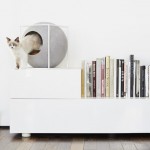
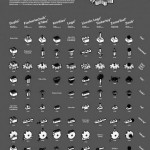
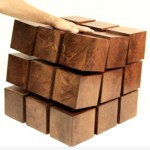









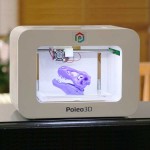
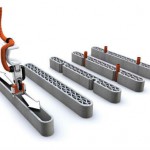












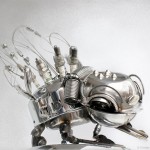
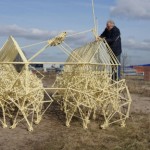
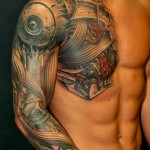




You must be logged in to post a comment.